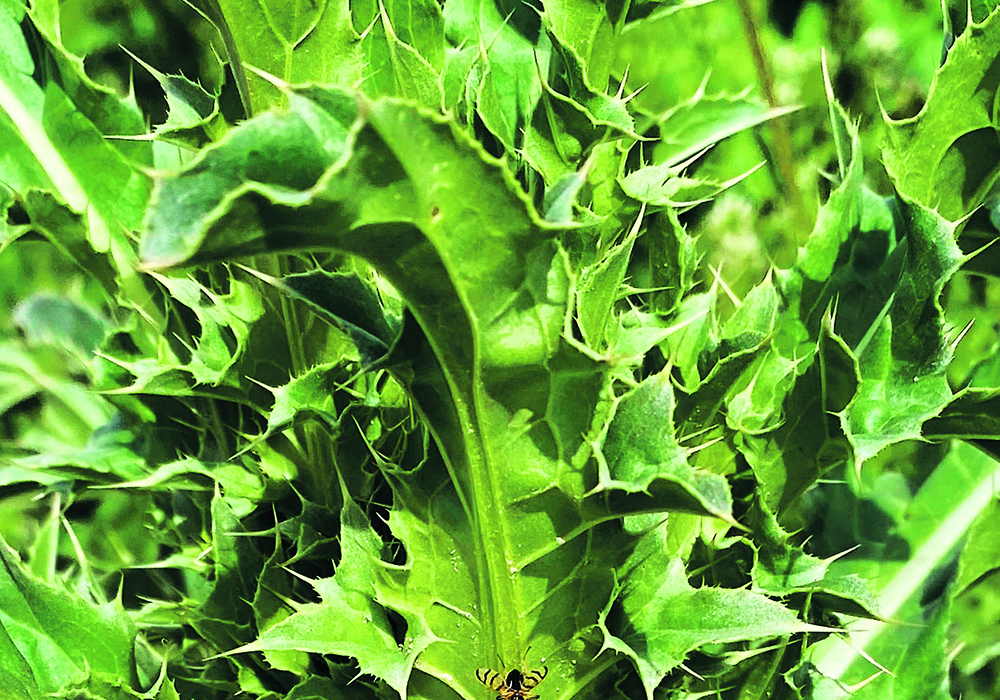If only purge and spurge went together as well as they rhyme.
Leafy spurge (Euphorbia esula virgata) is a pasture pest that has been invading Canadian farms since shortly after settlement.
The National Research Council made a film for farmers in 1946 about the weed and its control.
It is estimated that more than 20,000 acres of pasture and native prairie are infected in Saskatchewan.
Leafy spurge came from Europe and has no natural enemies in North America.
The deeply rooted perennial causes mouth blisters and scours in cattle and is difficult to eliminate.
Read Also

Volatile temperatures expected for this winter
DTN is forecasting a lot of temperature variability in the Canadian Prairies this winter. Precipitation should be close to average.
Introduction of insect pests has provided some control.
A 14 year study in Montana using the black dot flea beetle (Aphthona nigriscutis) showed better than 60 percent control of the weed.
It has been used successfully in Western Canada’s drier zones, along with the brown dot flea beetle (Aphthona cyparissiae) in damp climates.
The leaf tier moth (Lobesia euphorbiana) also has control potential.
It takes several years to establish these insect species, which typically need to be integrated into a control program that includes herbicides.
Unfortunately, native plants require several years to recover once they have been damaged by the yellow- flowered pest.
Agriculture Canada research near Brandon has shown that sheep and goat grazing can reduce seed production and root mass, which can damage the weed’s vigour.
A few weeks of concentrated grazing can train the animals to develop a preference for the weed. Grazing can be used in combination with appropriate chemical control.
Leafy spurge’s hardiness and ability to reproduce from both seed and root means single-control approaches are limited.
Tordon 22K, a Group 4 broadleaf herbicide from Dow, is approved for use in pastures. The application rate is 3.6 litres per acre in rangeland and grass pasture in 90 to 180 gallons per acre of water.
Tordon 22K (picloram) is a persistent product and should not be applied to highly permeable soil or where there is water flow or irrigation. The same goes for manure from treated land.
It has a suggested retail price of $42.10 per litre and needs reapplication after four years.
The weed can be controlled with tillage, but this doesn’t usually work in pasture.
Other products can provide control and suppression in all-grass pastures.
Amitrol 240 (amitrol) can be applied at 15.2 to 18.5 litres per acre in 10 to 30 gallons of water when applied in non-cropped areas and pastures when the weed is between the late stages of flowering and early seed development.
Dicamba can be used at a rate of 0.84 litres per acre in 10 to 20 gallons of water for top growth control when the weed is actively growing.
As well, 2,4-D amine at 1.82 litres per acre of 500 gram per litre formulations can be applied at the early flowering stage in field patches or pasture where it can be tolerated by the desirable species. This should be combined with a repeat application later in the season. The strategy will be needed for four or five seasons to gain an upper hand.
Weed of the Week is intended to provide background information and images of some of Western Canada’s most persistent pests. Producers should always consult with their provincial agronomists and crop protection guides for specific label rates and application information.














